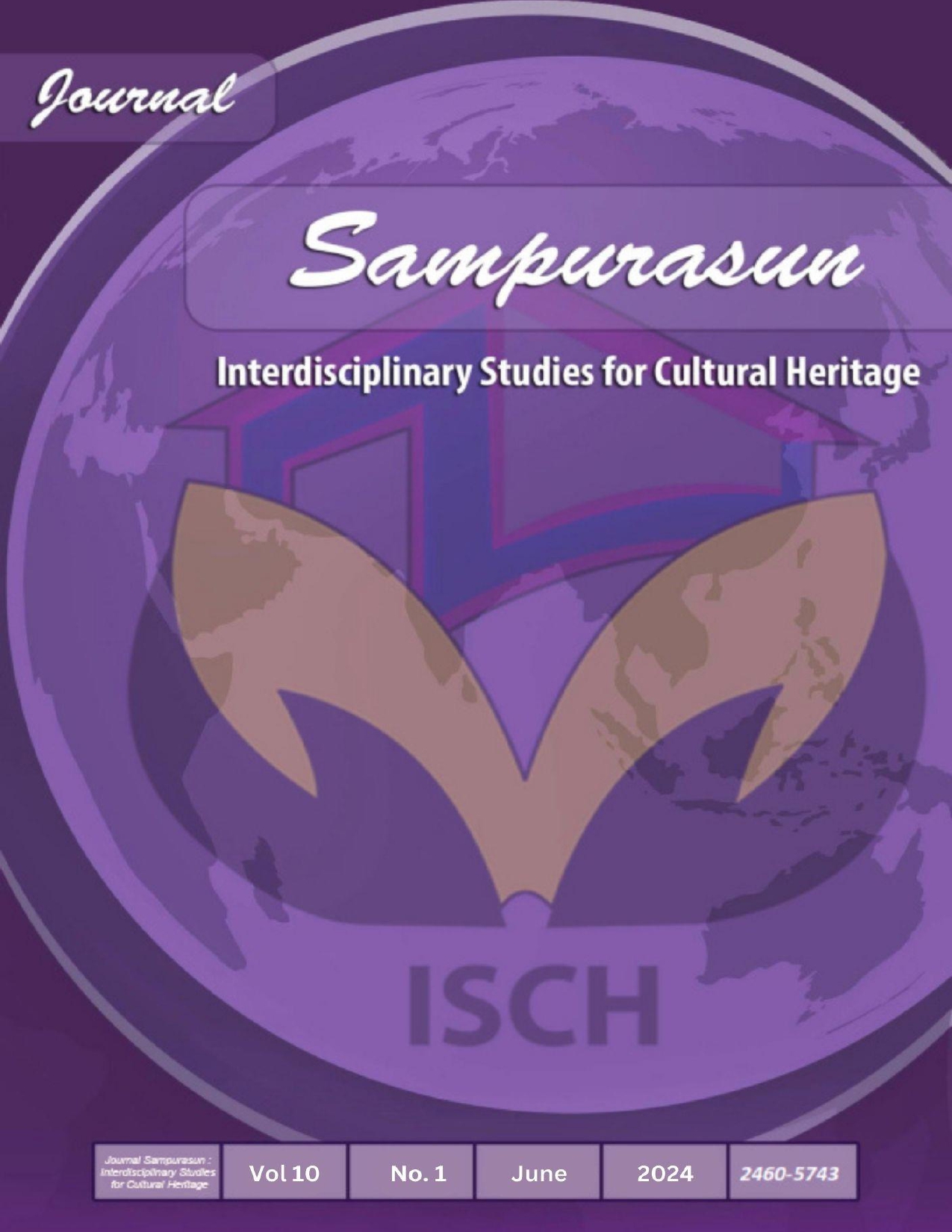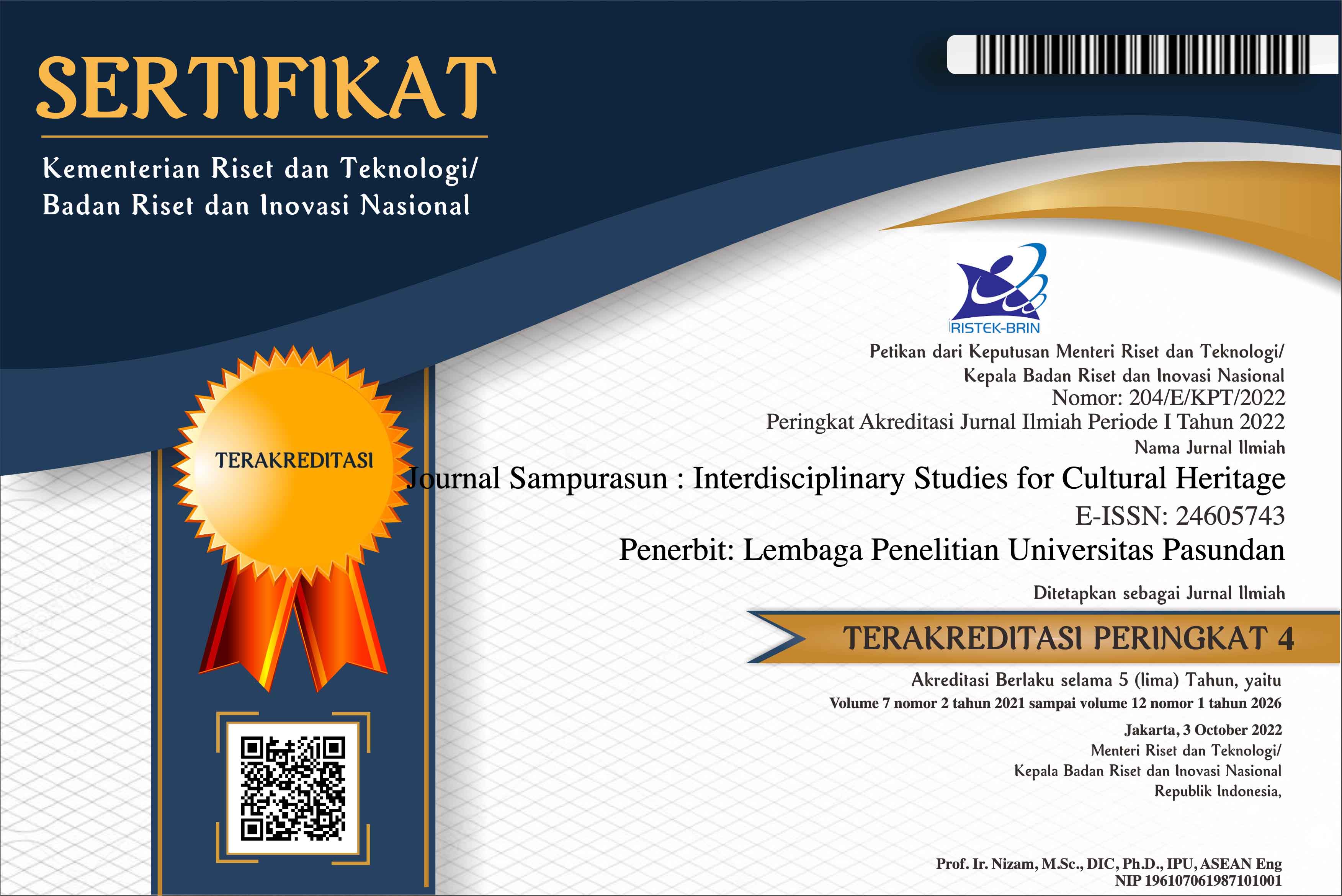ETHNOGRAPHY OF CULTURAL COMMUNICATION WAYANG GOLEK MADE FROM WASTE IN BOGOR CITY, WEST JAVA
DOI:
https://doi.org/10.23969/sampurasun.v10i1.13761Keywords:
Communication Ethnography, Wayang Golek, Cultural Heritage, Environmental Awareness, WasteAbstract
This research discusses the cultural communication of wayang golek performances made from
waste in Bogor City, West Java. In the midst of the phenomenon of cultural degradation in big
cities, Sanggar Edas Bogor City is still maintaining the existence of wayang golek, especially
maintaining cultural preservation while caring for the environment. This research uses an
ethnographic communication approach which consists of three stages, communicative situations,
communicative events, and communicative actions. This research, which was conducted from 2023
to 2024, used descriptive qualitative research methods through observation data collection,
interviews and documentation studies. The research results show that the three stages of the
ethnographic communication study model, namely the communicative situation, explain that the
conditions when communication occurs in a wayang golek performance are adjusted depending on
the place, time or communication activities in a wayang golek performance. The second stage,
namely communicative events, explains that communicative events include all of the components
and complete devices, starting from the purpose of communication, common topics through
messages related to awareness of environmental damage due to uncontrolled waste, involving
participants who use the same language varieties, maintaining Sundanese language rules. the same
way to interact in a wayang golek performance. And the third stage, namely communicative action,
is the process of exchanging environmental messages, ideas and feelings between the puppeteer
and the audience
Downloads
References
Hymes, D. H. (1964). Language in culture and society: A reader in linguistics and anthropology. Harper & Row.
Imelda, C., Dewi, C., Sekarningsih, F., & Taryana, D. T. (2022). THE ART OF Puppetry as a Form of Social Criticism.Ring, 2(2).
Koentjaraningrat. (1990). Kebudayaan Mentalitas dan Permbangunan. Jakarta PT Gramedia Pustaka Utama.
Ma’ruf. (2018). Wayang golek sebagai warisan budaya Islam Sunda perspektif arkeologis: studi protoype, pakem, karakteristik dan ketokohan. UIN Sunan Gunung Djati Bandung.
Muh, F. (2014). Tokoh wayang populer. PT Hafamira.
Priyanto Priyanto, B. M. M. (2020). Seni Pertunjukan Wayang Golek Sebagai Daya Tarik Pariwisata Budaya Di Saung Angklung Udjo. Jvi.Ui.Ac.Id, 8(1), 49–54. http://www.jvi.ui.ac.id/index.php/jvi/article/view/110
Septianti, A., Christin, M., Nurfebiaraning, M. S. S., & Sos, S. (2015). UNSUR BUDAYA DALAM KOREAN REALITY SHOW ( Analisis Resepsi pada Reality Show EXO ’ s Showtime ) CULTURAL ELEMENTS IN KOREAN REALITY SHOW ( Reception Analysis on EXO ’ s Showtime Reality Show ). 2(3), 4068–4073.
Sudana, I. W. (2021). Komoditisasi Seni Kriya Tradisional melalui Kreativitas dan Inovasi. ISI Press.
Downloads
Published
Issue
Section
License
Copyright (c) 2024 Journal Sampurasun : Interdisciplinary Studies for Cultural Heritage

This work is licensed under a Creative Commons Attribution 4.0 International License.
Copyright Notice
Authors should not withdraw their submitted papers because the withdrawal wastes voluntary works devoted by an associate editor and reviewers. But, we accept the withdrawal of a submitted paper if authors have unavoidable reasons. In the event that a manuscript is to be withdrawn from submission to Sampurasun Journal, a letter must be sent to the editorial office requesting withdrawal by e-mail (sampurasunjournal@unpas.ac.id) with its scanned PDF file, before the notification of acceptance for publication.
The withdraw request letter must include the following information. Paper ID, Paper title, Authors names, Reason why the paper must be withdrawn, and Date and signatures of all the authors (or signature of the contact author).
If only the contact author signs the letter, he/she must obtain the agreement of the withdrawal from all the other authors and the letter must include the description that all the other authors agreed the withdrawal. The journal will not withdraw a manuscript from peer review until such a letter has been received. Authors must not assume their manuscript has been withdrawn until they have received appropriate notification from the editorial office. Withdrawal of a manuscript subsequent to acceptance for publication will only be granted in the most exceptional of circumstances.
After the paper is accepted for publication, the withdrawal is not permitted in principle. The authors must always pay the charge even if the withdrawal is permitted. Any request of withdrawal that does not follow the above procedure is treated as invalid. If illegal submission, e.g., plagiarized or duplicate submission, is found for a paper, the withdrawal of the paper will never be permitted and the authors will be punished based on the rule. It is not acceptable practice to withdraw a manuscript in the event of acceptance at another journal. This constitutes dual submission. The editorial office of the other journal will be notified of your actions. In such circumstances Sampurasun ISCH may chose to impose appropriate punitive action subject.
Withdrawal Penalty
Author is not allowed to withdraw submitted manuscripts, because the withdrawal is waste of valuable resources that editors and referees spent a great deal of time processing submitted manuscript, money and works invested by the publisher. If author still requests withdrawal of his/her manuscript when the manuscript is still in the peer-reviewing process, author will be punished with paying $200 per manuscript, as withdrawal penalty to the publisher. However, it is unethical to withdraw a submitted manuscript from one journal if accepted by another journal. The withdrawal of manuscript after the manuscript is accepted for publication, author will be punished by paying US$500 per manuscript. Withdrawal of manuscript is only allowed after withdrawal penalty has been fully paid to the Publisher. If author don't agree to pay the penalty, the author and his/her affiliation will be blacklisted for publication in this journal. Even, his/her previously published articles will be removed from our online system.


















